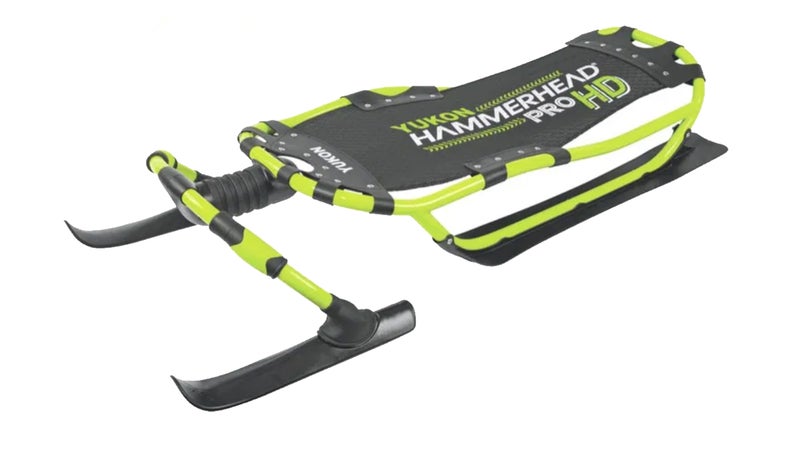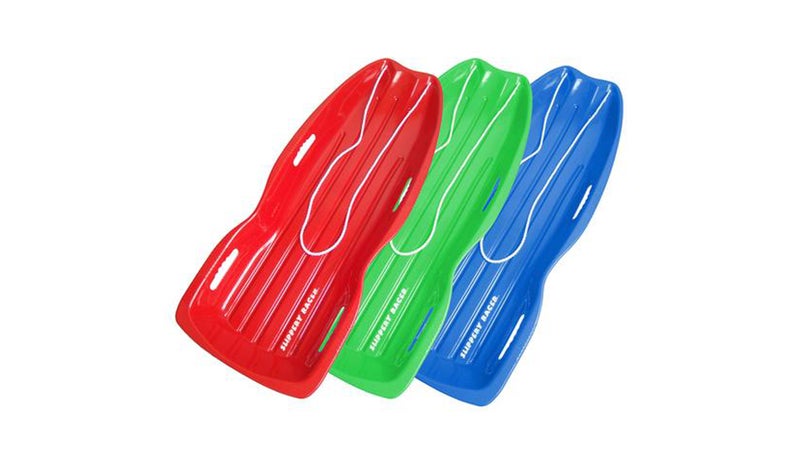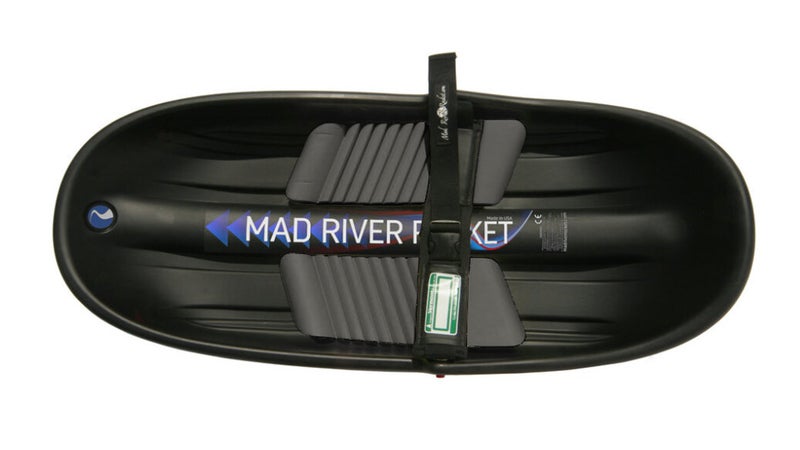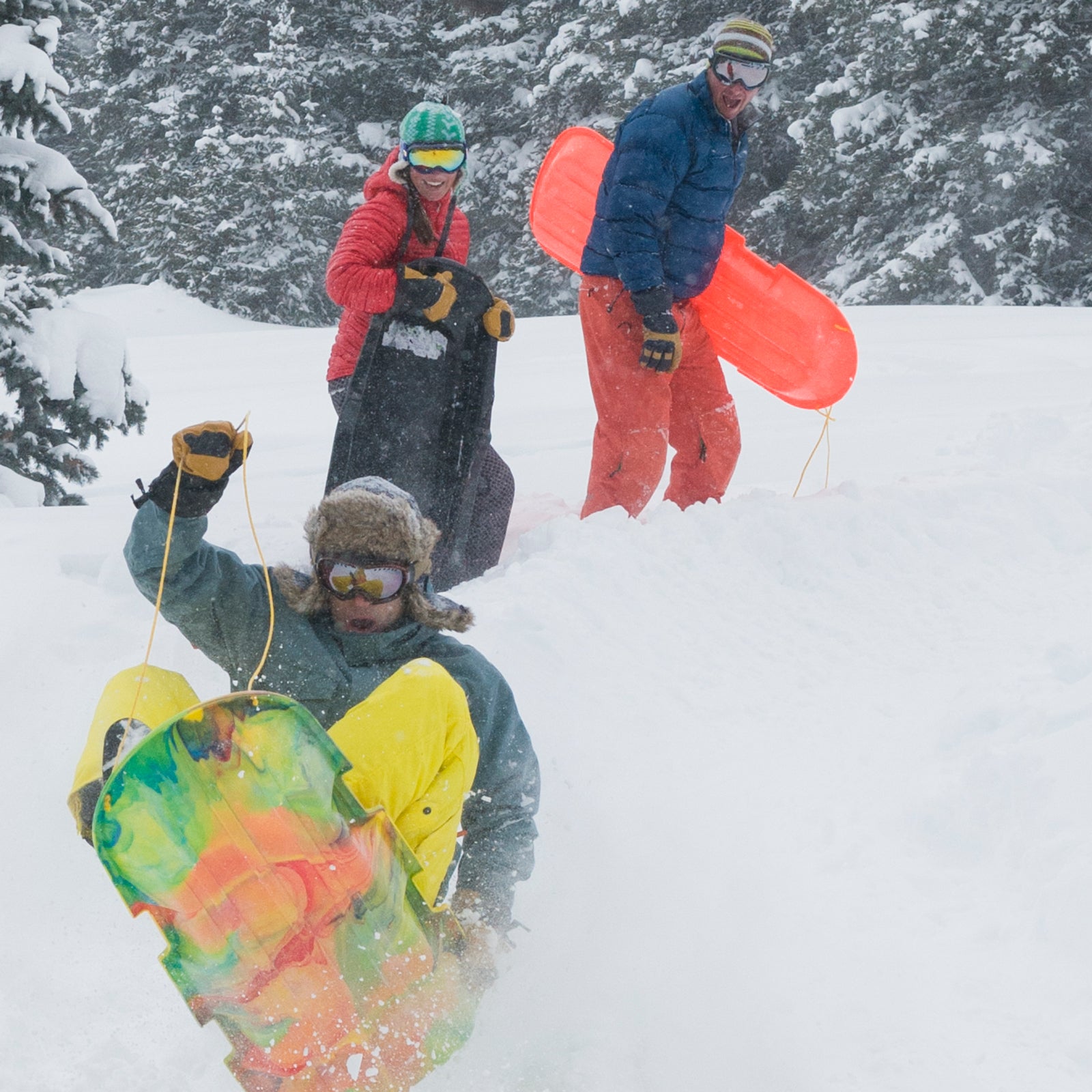It was only 14 degrees when I arrived at the base of Vermont’s Lincoln Gap late one afternoon. Grimy, bumper-stickered cars and trucks lined the narrow road, pressed up against the snow. Their ski racks were conspicuously empty, but not because everyone was out skiing. This day was for a different adventure: sledding.��
Lincoln Gap is the steepest paved mile in the United States. Located in the Green Mountains, it connects��the towns of Lincoln and Warren. Some sections exceed a 20 percent grade, which is why the road is closed from mid-October to mid-May—it’s too dangerous to plow, and the consequences of sliding off the road are too great. So what would be a nightmare for drivers is��a wintertime��nirvana for those willing to hike.
From the blocked road, folks trek 600 unplowed and vista-packed vertical feet to the top of the 2,428-foot pass. I respect that��vert��and didn’t want to be unprepared. In anticipation, I spent days researching sleds and��heading to smaller hills with an arsenal of test rides.
These were no toy sleds. They were all ready for the adventure. I had the traditional-looking��but obscenely fast��,��the juiced-up ,��and the local-favorite , a kneeboard-style rig designed right at the base of Lincoln Gap. For this mission, the choice was soon clear. After every test run, I reached for the Hammerhead. It’s designed to pilot lying face forward, with your chest cradled on a trampoline of mesh fabric stretched across an aluminum frame. Your hands reach ahead to clutch��rubberized grips that��turn the sled’s short polycarbonate front skis. A single leaf spring lets those��skis flex while staying connected to the body of the sled and��two high-density polyethylene rear skis, which are flat, fixed, and fast.
The forecast was clear, which meant packed-snow��conditions on the gap, perfect for the Hammerhead’s ski runners. What’s more, I knew the gap��had big, steep curves with not much past them but air, which meant the sled’s��short convex front skis gave the Hammerhead a huge advantage in what I came to understand as the great sledding differentiator: steering. That said, I still wasn’t sure how the sled would stand up to its��biggest challenge.��
I’d never seen a Hammerhead other than the one I carried. But after three steps toward the blocked gap road, I watched a middle-aged father hurtling��down atop a Hammerhead of his own. He maneuvered��around the barricade without slowing down, and when he reached his minivan, he jammed the steering skis sharply. The back end swung around, skidded, and stopped. He hockey-stopped. On a sled. I started walking faster.
We’d had a good snow the week before. It piled high on the skinny branches of maples that lined the road, shadows in negative. The first half-mile was a gradual uphill, a dose of false confidence.��
A��clearing expanded out before the truly steep sections started. The road curved up and around a��corner, out of sight, into the trees—a wide, white ribbon like some theatrical ramp a winged Elton John might descend from. Three or four locals stood in a circle at its��base, surrounding a small dug-out fire pit that had burrowed its way into the snow over the season. “Is that a Hammerhead?” one of them shouted at me.��
My legs were heavy��but moved quickly as I approached the crest of the gap. It’d been about half an hour since I’d left the truck. Just as the road rounded off and headed down in the opposite direction, I tossed the sled��in front of me, panting. Wind gusted up from both sides. The snow here was tamped down from snowshoes, alpine-touring boots, nordic skis, and the fat soles of sledders’ shoes. A nearby signpost read “Grades over 20 Percent.��Cyclists Beware.” At least bikes have brakes. I Velcroed one end of the carrying loop around my backpack strap as a makeshift leash. I didn’t want to chase the Hammerhead down the mile-long road should anything go wrong.��
I mounted the sled, and��as the front skis edged over the road, the Hammerhead attacked the hill. The ride was nimble and responsive, like a go-cart. With a light twist, the sled glides to the side;��turn it sharper, and it carves;��crank as hard as you can, and the front skis sideways.��
I kept pushing the limits, trying to find��when the skis would fail to catch an edge, forcing me to bail off the side��as the sled plowed forward. But they never did. I windshield-wipered myself across the hill, legs whipping back and forth off the back. Laughing. Laughing. Laughing.��
As the road steepened, I straightened the skis downhill, lowered my head close to the handles, and started to pick up speed. Forest sped by��and��the sound of snow muffled by my ski helmet and the air rushing past. Approaching a tight turn,��I twisted the front skis. They stuttered across the snow before the edges sunk in, tearing through the apex of the turn and picking up even more speed into the straight stretch ahead. The rear skis washed out behind me, then swung back in line, like a wagon following a spooked horse.
I was on the border between control and recklessness, just along for the ride. I shouted��into the sky, snow shooting up into my face and burrowing in my beard, the cold tightening skin already stretched wide in a smile. Two minutes after I’d begun my descent, I spilled out into the clearing, coasting past the small fire pit. Yes, the Hammerhead really was sweet.
A few hours later, I pulled my heavy boots up the hill for my fourth��and last��run of the day. The wind chilled my sweat-dampened chest. A man stood at the top, staring me down, waiting. He wore Arctic Cat snowmobile pants, with a fur-lined hat framing his wrinkled face. “I’ll race you to the bottom,” he said.
The Sleds

Best Overall
Yukon Hammerhead Pro HD ($220)
The is the almost illogical conclusion of your childhood dreams. It seems as unlikely as a carbon-fiber Lego. But its performance on a mountain will make you a believer. Not only is it obscenely fast, but it offers��a level of control that elevates it from��common toy��to true adventure machine.

Best Value
Slippery Racer ($63)
The looks like any sled you might find at the gas station: classic red plastic, white rope out front, cut-out handles, and a channeled bottom. Yet��its performance is anything but typical. The plastic bottom feels fast, even when just running your hand down it. On snow��it absolutely tears down hills, gaining acceleration quickly. It’s also easy to ride, either sitting upright or lying chest down and��head first—but��take note: the rope is more for holding onto than steering. You’ll have to drag a hand or foot to tilt the Racer where you want it to go.

Best for��Powder
Mad River Rocket ($170 and Up)
The looks more like a kneeboard than a traditional sled. Kneel on the pads in the bucket of the sled, pull the strap over your thighs and Velcro it down, and you are attached. This lets you maneuver the sled with your hips and core. In deep powder, the dramatic bottom grooves channel snow and allow you to carve with your whole body—great for anyone who chases untracked backcountry adventure. However, it struggles in packed snow, where you lose much of the steering control. I didn’t use��the Rocket on the gap because much of the hill had firm��snow.��


